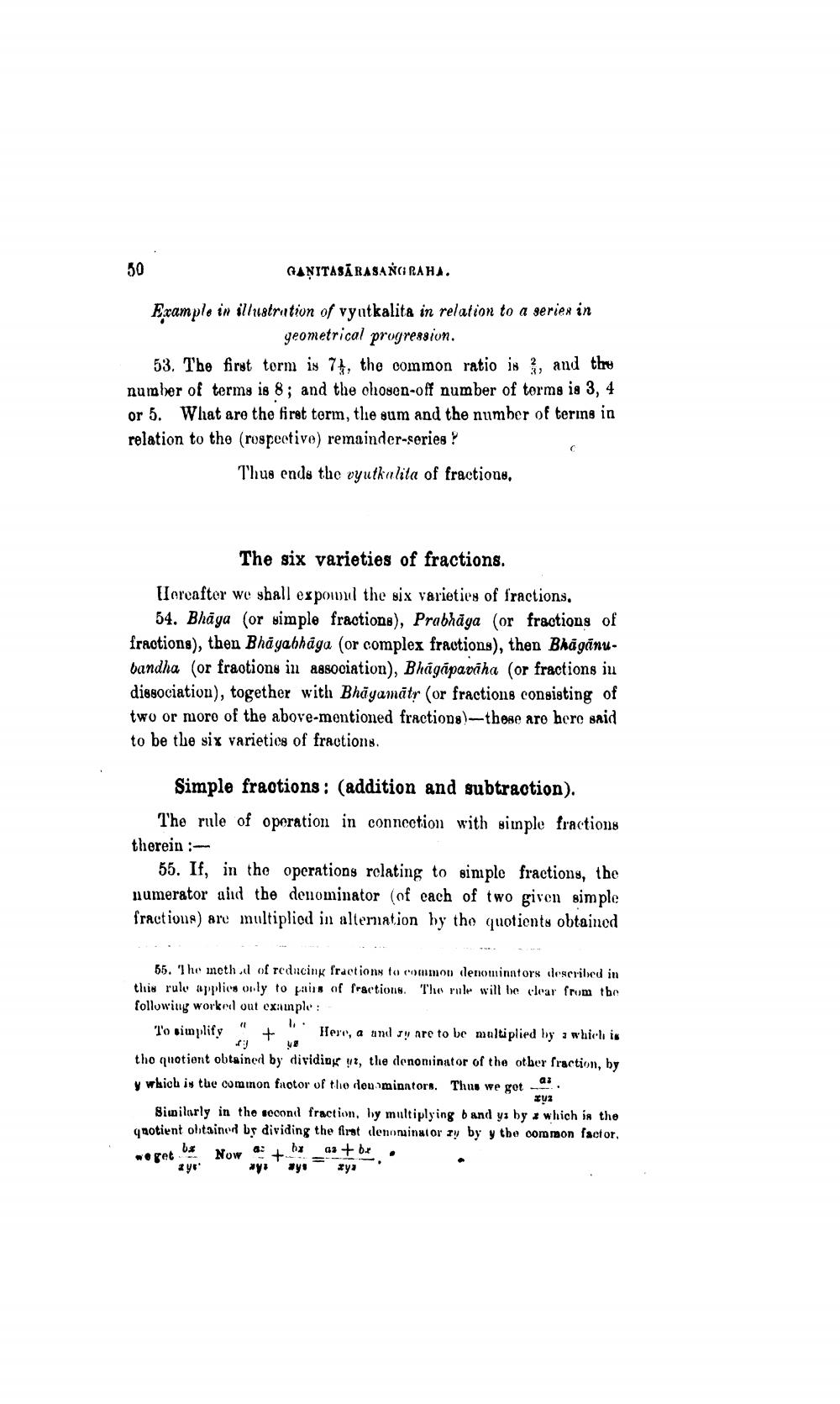________________
GANITASĀRASANG RAHA.
Example in illustration of vyatkalita in relation to a series in
geometrical progression. 53. The first term is 74, the common ratio is y, and the number of terms is 8; and the chosen-off number of terms is 3, 4 or 5. What are the first term, the sum and the number of tering in relation to the (rospective) remainder-series ?
Thus ends the vyutkalita of fractions,
The six varieties of fractions.
Lorcaftor we shall expom the six varieties of fractions.
54. Bhäga (or simple fractions), Prabhāga (or fractions of fractions), then Bhagabhága (or complex fractions), then Bhāgānubandha (or fractions in association), Bhagāpavāha (or fractions iu dissociation), together with Bhāyamātr (or fractions consisting of two or more of the above-mentioned fractions)--these are here said to be the six varieties of fractions.
Simple fractions : (addition and subtraction).
The rule of operation in connection with sinple fractions therein :
55. If, in the operations relating to simple fractions, the numerator and the denominator (of each of two given simple fractions) are multiplied in alteration by the quotients obtained
55. 'l he ineth of reducing fractions to common denominntors described in this rule applics only to pains of fractions. The rule will be clear from the following worked out example:
To simplify " + " Here, a and Jy are to be multiplied by a which is tho quotiont obtained by dividing yz, the denoninator of the other fraction, by y which is the common faotor of the douaminntors. Thus we got .
TUZ Similarly in the second fraction, by multiplying band ya by : which is the qaotient obtained by dividing the first denominator zy by y the common factor, weget b Now + bx a3 + bx
2 yo w y sys sya




